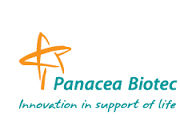预约演示
更新于:2025-05-07
Poliovirus vaccine live oral bivalent (Panacea Biotec)
更新于:2025-05-07
概要
基本信息
药物类型 预防性疫苗 |
别名 Bivalent Poliomyelitis Vaccine Type 1 & Type 3, Live (Oral)(Panacea Biotec)、Bivalent oral poliovirus vaccine (Panacea Biotec)、bOPV (Panacea Biotec) + [1] |
靶点- |
作用方式 刺激剂 |
作用机制 免疫刺激剂 |
非在研适应症- |
非在研机构- |
权益机构- |
最高研发阶段批准上市 |
首次获批日期- |
最高研发阶段(中国)- |
特殊审评- |
登录后查看时间轴
关联
4
项与 Poliovirus vaccine live oral bivalent (Panacea Biotec) 相关的临床试验NCT04576910
Immunogenicity and Safety of the Booster Dose of Polio Vaccine Immunization Using Sabin IPV or bOPV at Children Aged 4 Years With Different Three Sequential Schedules History by Sabin IPV or bOPV in China
This study is to evaluate the immunogenicity and safety of Sabin IPV or bOPV, given as a booster vaccination in children aged 4 years who were previously immunised with different sequential immunization history by Sabin IPV and bOPV, and to observe the antibody persistence three years after different primary sequential immunization with Sabin IPV or bOPV at age 2, 3 and 4 months.
开始日期2020-11-05 |
申办/合作机构 |
ACTRN12616001272482
Randomized Controlled Trial of Bivalent Oral Poliovirus Vaccine and Inactivated Poliovirus Vaccine in Nigerian Children in the EPI Schedule
开始日期2016-08-16 |
ACTRN12616000169448
Comparison of mucosal immunity against polioviruses induced by inactivated poliovirus vaccine alone or in combination with bivalent oral poliovirus vaccine - a trial in small children in Cuba
开始日期2016-02-15 |
申办/合作机构- |
100 项与 Poliovirus vaccine live oral bivalent (Panacea Biotec) 相关的临床结果
登录后查看更多信息
100 项与 Poliovirus vaccine live oral bivalent (Panacea Biotec) 相关的转化医学
登录后查看更多信息
100 项与 Poliovirus vaccine live oral bivalent (Panacea Biotec) 相关的专利(医药)
登录后查看更多信息
120
项与 Poliovirus vaccine live oral bivalent (Panacea Biotec) 相关的文献(医药)2024-12-16·Revista Panamericana de Salud Pública
Monitoreo rápido de vacunación y su impacto en coberturas de vacunación para campañas de seguimiento de alta calidad en República Dominicana, 2023
Article
作者: Rocha Queiroz Lemos, Daniele ; Peguero, Matilde ; Durón Andino, Regina ; Mateo, Anggie ; Bello, Zoila ; Anchayhua, Yndira ; Vargas, Aída ; Rodríguez, Yunathery
2024-09-01·Vaccine
Assessing the mucosal intestinal and systemic humoral immunity of sequential schedules of inactivated poliovirus vaccine and bivalent oral poliovirus vaccine for essential immunization in Bangladesh: An open-label, randomized controlled trial
Article
作者: Estivariz, Concepcion F ; Oberste, M Steven ; Haque, Warda ; Wassilak, Steven G F ; Zaman, Khalequ ; Aziz, Asma Binte ; Anand, Abhijeet ; Pallansch, Mark A ; Weldon, William C ; Hendley, William S ; Snider, Cynthia J ; Yunus, Mohammad
2024-04-01·Inflammopharmacology
Observational analysis of the immunogenicity and safety of various types of spinal muscular atrophy vaccines
Article
作者: Sun, Guojuan ; Wang, Guangzhi ; Zhong, Heng
1
项与 Poliovirus vaccine live oral bivalent (Panacea Biotec) 相关的新闻(医药)2022-10-26
10月24日是世界脊髓灰质炎日,目前全球仅剩阿富汗和巴基斯坦两个国家仍有野生脊灰病毒传播。为了根除这一顽疾,近日,盖茨基金会向全球根除脊髓灰质炎行动(GPEI)捐资12亿美元。此前,盖茨基金会已向GPEI捐资近50亿美元。►这是GPEI《2022-2026年消灭脊灰战略》宣传海报。该战略致力于阻断野生脊灰病毒的传播,并阻止变异脊灰病毒的暴发。脊髓灰质炎俗称小儿麻痹症,它可造成终身残疾,甚至死亡。迄今为止仍无药可医。1950年代脊灰疫苗问世,在GPEI的推动下,全球病例已减少99.9%。2021年仅有6例病例报告。►2017年4月22日,在尼日尔多索的科雷-迈鲁阿的脊灰疫苗强化免疫活动中,7岁的亚库巴·卡尔特牵着骆驼进入牧民营地。疫苗接种者所覆盖的区域很难用摩托车或汽车到达。这些社区本身只是过渡性的,所以牧民不会定期去卫生服务机构,也就无从了解脊灰强化免疫接种。然而,比根除来的更快的,是脊灰病毒的卷土重来。在免疫接种人数不足的地方,罕见的疫苗衍生病毒仍在蔓延。近几个月,美国、以色列和英国也发现了新疫情。►2005年9月28日,在埃塞俄比亚的埃尔古达村, 11岁男孩的齐亚德·艾哈迈德努尔患有脊灰。他热爱科学和数学,是三年级的优等生,由于无法站立和行走,每天只能用手爬着上学。据世界卫生组织预测,如果放任脊灰死灰复燃,十年之内每年将有超过20万人发病。为了避免这一灾难,维持高水平疫苗接种至关重要。►2022年5月25日,在刚果民主共和国基桑加尼的曼戈博,脊灰疫苗强化免疫第一天,动员者柳恩达梅利戈·奥古斯丁在一户孩子已接种疫苗的家庭窗户上,做了识别和跟进标识。为了应对疫苗衍生病毒,盖茨基金会支持伙伴研发新一代疫苗nOPV2,目前已在全球接种近5亿剂。►2022年5月25日,在刚果民主共和国基桑加尼的曼戈博,脊灰疫苗强化免疫第二天到来前,接种小组在冷藏箱中放好要用的疫苗。 盖茨基金会支持中国的疫苗企业研发生产的bOPV和sIPV通过世卫组织的预认证(PQ)。截至2021年底,仅bOPV就已供应全球超过7000万剂次。►中国产bOPV于2017年通过世界卫生组织预认证。/图源:新华社盖茨基金会还与中国伙伴合作开发适合基础设施薄弱地区使用的疫苗冷链设备,让疫苗能够安全抵达每一个角落,保护每一个孩子都能远离脊灰等致命疾病的威胁。►2014年7月23日,在埃塞俄比亚的阿查莫卫生所,比尔克-菲萨哈护士正在演示如何用“被动疫苗储存装置”将疫苗低温保存30天。我们距离根除脊灰只差一步之遥,是时候了,让我们共同更进一步。►在2016年10月24日的世界脊灰日之前,"立即结束脊灰 "的标志被投射在华盛顿州西雅图的比尔及梅林达-盖茨基金会总部。
疫苗合作
100 项与 Poliovirus vaccine live oral bivalent (Panacea Biotec) 相关的药物交易
登录后查看更多信息
研发状态
10 条最早获批的记录, 后查看更多信息
登录
| 适应症 | 国家/地区 | 公司 | 日期 |
|---|---|---|---|
| 脊髓灰质炎I型脊髓灰质炎 | 印度 | - | |
| III型脊髓灰质炎 | 印度 | - |
登录后查看更多信息
临床结果
临床结果
适应症
分期
评价
查看全部结果
| 研究 | 分期 | 人群特征 | 评价人数 | 分组 | 结果 | 评价 | 发布日期 |
|---|
No Data | |||||||
登录后查看更多信息
转化医学
使用我们的转化医学数据加速您的研究。
登录
或

药物交易
使用我们的药物交易数据加速您的研究。
登录
或

核心专利
使用我们的核心专利数据促进您的研究。
登录
或

临床分析
紧跟全球注册中心的最新临床试验。
登录
或

批准
利用最新的监管批准信息加速您的研究。
登录
或

特殊审评
只需点击几下即可了解关键药物信息。
登录
或

生物医药百科问答
全新生物医药AI Agent 覆盖科研全链路,让突破性发现快人一步
立即开始免费试用!
智慧芽新药情报库是智慧芽专为生命科学人士构建的基于AI的创新药情报平台,助您全方位提升您的研发与决策效率。
立即开始数据试用!
智慧芽新药库数据也通过智慧芽数据服务平台,以API或者数据包形式对外开放,助您更加充分利用智慧芽新药情报信息。
生物序列数据库
生物药研发创新
免费使用
化学结构数据库
小分子化药研发创新
免费使用

